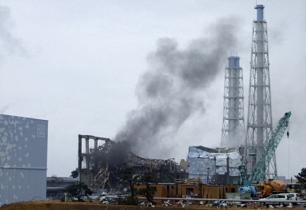Fukushima disaster worsens with nuclear fission
(Bloomberg) -- Tokyo Electric Power Co. detected signs of nuclear fission at its crippled Fukushima atomic power plant, raising the risk of increased radiation emissions. No increase in radiation was found at the site and the situation is under control, officials said.
The company, known as Tepco, began spraying boric acid on the No. 2 reactor at 2:48 a.m. Japan time to prevent accidental chain reactions, according to an e-mailed statement today. The detection of xenon, which is associated with nuclear fission, was confirmed today by the Japan Atomic Energy Agency, the country's atomic regulator said.
“Given the signs, it's certain that fission is occurring,” Junichi Matsumoto, a general manager at Tepco who regularly talks to the media, told reporters in Tokyo today. There's been no large-scale or sustained criticality and no increase in radiation, he said.
Fission taking place in the reactor can lead to increases in radiation emissions and raises concerns about further leaks after another radioactive hot spot was discovered in Tokyo on Oct. 29. It's possible there are similar reactions occurring in the No. 1 and No. 3 reactors, the other cores damaged at the station, Matsumoto said.
“Melted fuel in the No. 2 reactor may have undergone a sustained process of nuclear fission or re-criticality,” Tetsuo Ito, the head of Kinki University's Atomic Energy Research Institute, said by phone. “The nuclear fission should be containable by injecting boron into the reactor to absorb neutrons.”
Loss of Cooling
Trade and Industry Minister Yukio Edano delivered a warning to Hiroyuki Fukano, the head of the Nuclear and Industrial Safety Agency, because the information on the discovery of xenon wasn't passed to the prime minister's office in a timely manner, Chief Cabinet Secretary Osamu Fujimura told reporters.
Comments
There are 0 comments on this post













